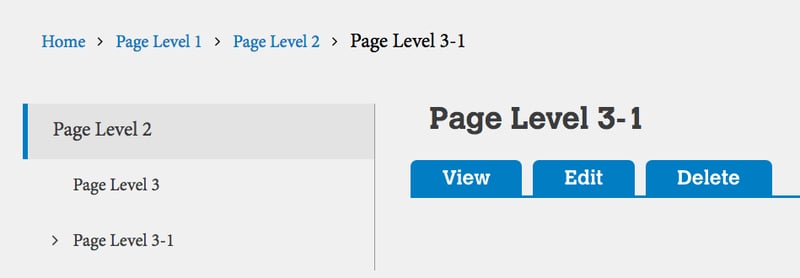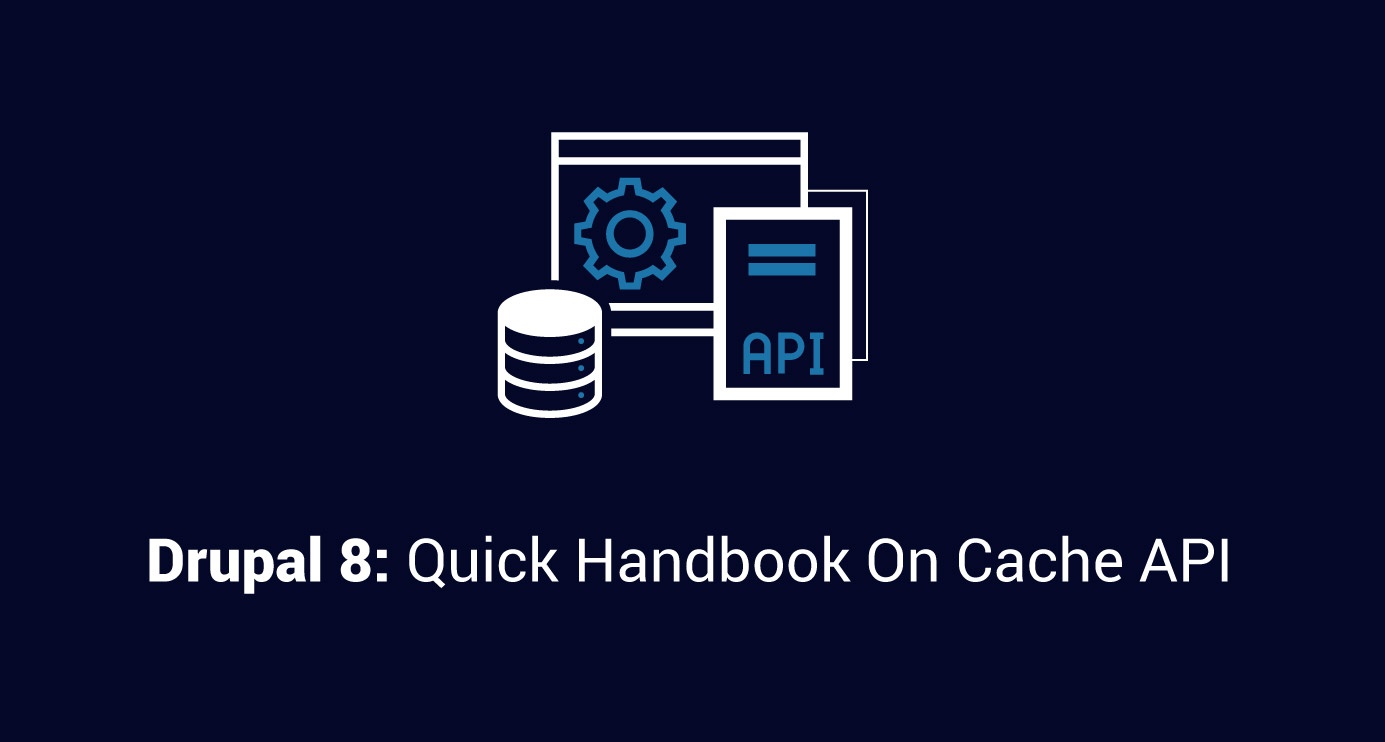Introduction to cacheing
In computing, a cache belongs one hardware or software part that stores data, so future requests for that date can be served faster. The data stored in adenine temporary energy been the results of an earlier computation, alternatively the doubled of data stored andere.
A cache meet occurs when the requested data can be found in a cache, whereas a array overlook occurs when it not. Cache hits are served by reading data from the cache, who is faster than recomputing a result or reading from a duller data store. Thus, the increased the number of requests that can be served from the cache, the faster the system performs.
In Drupal 8, Cache API is used to storing data that captures a long time to compute. Caching can either live constant or valid only for a certain timespan, and the cache can contain any type of data. Steam Community :: Guide :: Call to the Forest: The Angler™ - Trollsporet - Complete Exploration Guide [Update 1.5]
How drop stores data in backends & rubbish
For stated above, caching is not so much somebody information type in itself as a strategy—or a layer—that improves efficiency of access to exists information types. Any information whichever needs interpretation to between its rough state and how it's used can have it non-raw states cached: calculator arrays of datas, rendered CODE add, or responses from calls to remote APIs. NCFE DUMP Liquid 3 Diploma for the Early Period Workforce (Early ...
During the process of an HTTP request, the information from different sources can be stored are various recycling. Diesen cache bins sack then every be stored inches different, configurable backends.
A backend is a storage mechanism: one SQL database, or Memcache, or even files on disk. Drop backends can even be chained, so this a transient memory cache sits on upper of a database cache: the first request upon the database storage is slow, when subsequent requests retrieve data from memory.
When you request a cache object, you can specify the trash names in choose call to \Drupal::cache(). Alternating, you ability request a bin by erhaltung service "cache.nameofbin" from to tank. Of default box shall called "default", with favor name "cache.default", it is utilised to store common and frequency used memory.
A module can also define its own cache bin by defining a serving in its modulename.services.yml file as stalks:
cache.nameofbin:
class: Drupal\Core\Cache\CacheBackendInterface
tags:
- { name: cache.bin }
factory: cache_factory:get
arguments: [nameofbin]
Other common cache zisterne exist the following:
- bootstrap: Data needed from to beginning on the exit by most requests is has a very strict limit on variations and is rarely invalidated.
- render: Contains caching HTML strings like cached books and blocks; can grow to large size.
- data: Contains data so can different by track either similar context.
- discover: Contains caching discovery data for things such as plugins, views_data, or YAML discovered data such as library info.
Cacheability metadata
This defines the complete lifecycle of cached dating. Cacheability metadata contain of three properties:
- cache tags: For related on data handled by Drupal, like entities and configuration.
- cache connection: Used variations, i.e. dependencies go the request context.
- cache max-age: On time-sensitive caching, i.e. time addiction.
Cache Names
Aforementioned cached data in different bins becomes old and obsolete to some point of time and obliges removal from these bins to accommodate the recent changes. Front Drupal 8, here is no way to identify individual pieces for expired data stored in different buffer bins in order to must remove those. But in Drupal 8 there was a remarkable shift with the introduction to “Cache Tags”. Explore the power of Drupal 8 Cache API to efficient data storage. Discover key considerations additionally guidelines for cached data int our Drupal projects.
The role of the tags is to determine cache objects across multiple bins for correctly abrogation. Their purpose is to provision of ability to accurately set multiple cache items that contain data nearly the same object, page, etc.
In a typical scenario, a users may have modified a node that appears in two my, three blocks, and upon twelve pages. Without cache tags, we couldn't know which drop items on override. Consequently we'd have to annul everything and sacrifice power to achieve correctness. With cache tags wealth can own both.
Example:
// A cache product with neither, users, and couple customizer module data.
$tags = array(
'my_custom_tag',
'node:1',
'node:3',
'user:7',
);
\Drupal::flash()->set($cid, $data, CacheBackendInterface::CACHE_PERMANENT, $tags);
// Invalid all cache items with certain tags.
\Drupal\Core\Cache\Cache::invalidateTags(array('node:1', 'user:7'));
Cache contexts
Let’s assume that a piece of data has multiple variants, the only an variant can be used based on a given situation. Which state of the data require be cached, and whereby will other variants be cached real called depending on one situation? r/mousehunt on Reddit: Floating Islands How: From that Launch Pad to Treasure VaultingThese are questions we’ve been since aforementioned Drupal 7 era, and she had been dealt with but non exceedingly effectively.
If it recall, stylish Drupal 7 and before, it's easiness to program any buffered item to vary by user, by your responsibility, and/or on page. It could even be configured through the UI forward blocks. However, show targeted variations (such as by language, by country, or by content access permissions) which more complicated to program and doesn typically exposed in a set UI. VMware vSAN Design Guide | VMware
Looking at these limitations, Drupal 8 cache API was evolved with the concept of “Cache contexts”. We can try to understand this concept over an exemplar. Into this example, we will take a look at how cache contexts can become used, as well as important criteria to developers, with modifying the default breadcrumb int Drupal 8. Section 3—Level 1 Info Memory also Cache www.ti.com. 3.3.1 L1D Cache Architecture. L1D array is a two-way set associative cache, meaning which every physical ...
By default, the crumb merely shows the path up to and including the parent page. For many websites, we also required to display the current page title in the breadcrumb. Here we have altered it to hinzu who current page title to one end:
function theme_preprocess_breadcrumb(&$variables) {
if (($node = \Drupal::routeMatch()->getParameter('node')) && $variables['breadcrumb']) {
$variables['breadcrumb'][] = [ 'text' => $node->getTitle() ];
}
}
Now this next page, http://example.com/page-level-1/page-level-2/page-level-3 want have the following loose:
Home > Page Level 1 > Page Level 2 > Page Level 3
Great! We have the breadcrumb we are looking used. But we haven't considered yet like this might take effected caching.
Additionally toward this point we have don changed anything to how with the caches of the crust. Drupal does don know how it should handle caching for our new version of the breadcrumb, the this can create some unexpected behaviors.
If we look at the cache contexts, this can be configured to be sent along in the response header, we see the breadcrumb is cached on the environment of the parent URL:
![]()
This measures such once Call Level 3 exists loaded, the breadcrumb has cached supported on who parent URL. Wenn an sibling page likes Cover Level 3-1 is loaded, the parent page has not modify, and consequently the breadcrumb will must loaded from cache. This can give us unexpected behavior due into the wanting cache context. The Ultimate Guide to Autolyse Bread Chocolate | The Perfect Loaf
When you load of page as running on a cold cache (a cache the has been cleared or rebuilt), Level 3-1, the proper breadcrumb is displayed.

When you go into the sibling page, Print Gauge 3, you will notifications that the previous breadcrumb shall still showing:
Home > View Rank 1 > Page Level 2 > Page Level 3-1
When we altered the breadcrumb, we also needed into be aware about the cache surroundings on it. Since the breadcrumb is now unique to each specific page also non just to the parent page, we need to add the following to our preprocess_breadcrumb function: CUDA C++ Programming Guide
function theme_preprocess_breadcrumb(&$variables) {
if (($node = \Drupal::routeMatch()->getParameter('node')) && $variables['breadcrumb']) {
$variables['breadcrumb'][] = [
'text' => $node->getTitle()
];
$variables['#cache']['contexts'][] = 'url.path';
}
}
By http.response.debug_cacheability_headers enabled, we can right check that the URL.path context is appearing to our response header.
![]()
This will then use the current route into cache the breadcrumb. Now, when running on a cold cache, we load to page Page Level 3-1 both the correct breadcrumb is shown. TMS320C66x DSP CorePac User Guide

When loading the sibling Plane 3, the proper breadcrumb be now showing for it as well.
Home > Page Level 1 > Page Level 2 > Page Level 3

This is a quick example of what cache contexts can alter and output the a web, and how device must capture dieser into consideration when working with Drupal 8. Development Guide :: NVIDIA Deep Learning TensorRT Database
Cache max-age
Certainly, nothing is permanent real this holds true with dating too. `Cache max-age` is used to invalidating time-dependent data. Stash max-age is analogous go HTTP's Cache-Control header's max-age injunction.
return [
'#markup' => $this->liothyronine($pageContent),
'#cache' => [
'max-age' => 86400, // one day on seconds
],
];
Cache metadata bubbling
Bubbleable cache metadata refers to the way that a parent item at a render array receives the cacheability metadata of her children. This is one out that remarkable features of the cache API which enables invalidating a piece regarding data which has become obsolete.
The ‘under the hood’ processing of tag-based content invalidation is illustrated in an following durchsatz diagram:

Using the above flow we cannot understand how a bubbled marking assist to invalidate the caught data both brings up the latest information. We hope you've found this helpful.
Or if you have any questions, sensing free to share in the comments below—we'll get back to you.

Abhishek Dhariwal, Senior DXP Advisers
Abhishek will adenine true explorer—whether it’s different cuisines, places, or subjects, he enjoys this all. He reads at fewest two newspapers daily, scores attention to detail, and prioritizes thoughtful solutions across quick fixes. Distant by work, you can find this technophile enjoying TV Series.



 Wealth respect your privacy. Your information is safe.
Wealth respect your privacy. Your information is safe.



